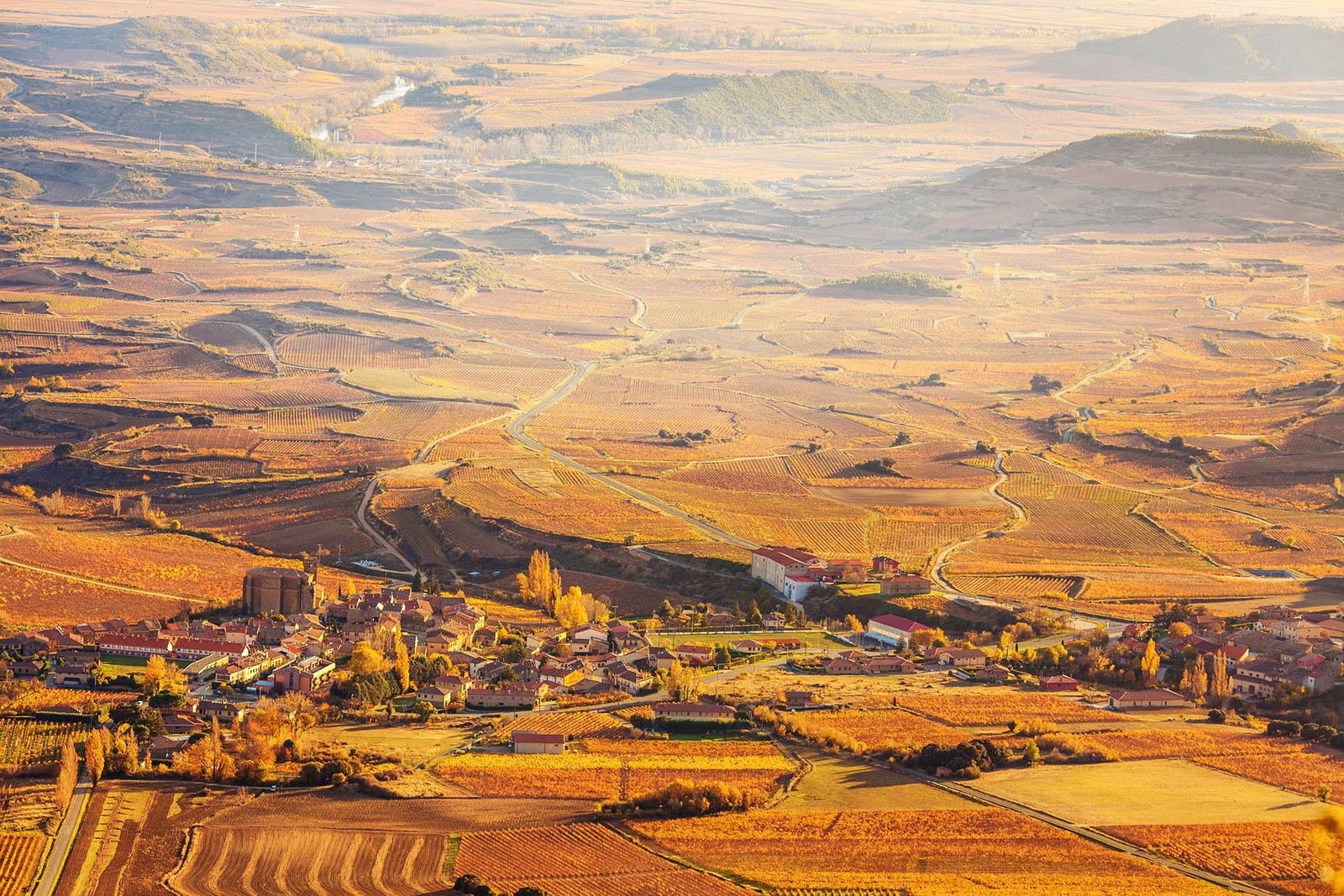How Some Noblemen, a Train and a Louse Helped Rioja Become a Global Superstar

[ad_1]
The earliest record of winemaking in Rioja, Spain, is from the 11th century B.C., when the Phoenicians settled the region. Local populations have made wine almost continuously since then. While Rioja’s geography isn’t conducive to wine exports, the climate is excellent for production. As a result, most of Rioja’s wine was consumed by residents or pilgrims on the Camino de Santiago until the 1800s.
A series of technological advances and ecological disasters from the 18th century to the late 20th century helped to not only improve the longevity of Rioja’s wine, but also make it one of Spain’s most famous wine regions.

The early days of Rioja wine
Until the 1700s, wine in Rioja was produced by stomping grapes in stone troughs. It was stored underground in often imperfectly sealed amphorae, and its exposure to oxygen meant the wine often either quickly spoiled or turned to vinegar.
The small amount of wine that was exported had to be packaged in leather canteens called bota bags. They were branded with a seal that signified that the wine was made in Rioja from only local grapes.
The first attempt to improve winemaking in the region was made by Don Manuel Esteban Quintano Quintano, a Rioja resident who journeyed to Bordeaux to learn how to produce wine that tasted great, traveled well and improved with age.
One of the most important techniques he learned was to age wines in oak barrels to smooth its flavor and help protect it from spoilage. Soon, it was possible to ship wine as far as the Americas, but the expensive oak barrels fell out of favor in Spain due to area regulations. It also didn’t help that Don Manuel attempted to promote French-inspired winemaking as the French army invaded Spain in 1808 during the Napoleonic Wars.
Oak barrels were reintroduced by Luciano Murrieta y García-Ortiz de Lemoine nearly a century later. He learned to appreciate Bordeaux wines while visiting friend, Baldomero Espartero, in London.
When Baldomero returned to his estate in Rioja, Luciano followed him. Like Don Manuel, he noted that the wines of Rioja weren’t quite as good as the wines of Bordeaux. So, he traveled to Bordeaux to learn how the winemakers created such delicious and transportable wine. Unlike Don Manuel, when Luciano returned to Spain, his techniques were greeted with enthusiasm.

The railroad and phylloxera
While these innovations improved the longevity of Rioja’s wine, it didn’t make it easier to transport bottles outside the region. This issue was resolved by the completion of a rail system in the mid-19th century. The railroad connected Rioja to two important port cities, Irun and Bilbao, which gave winemakers easier access to important national and international markets.
The railway coincided with two other ecological events in the mid-1800s. The first was an outbreak of fungus, called powdery mildew, in the vineyards of Galicia, one of Spain’s other winemaking regions. Powdery mildew weakened the vines it infected and reduced grape harvests, which impacted winemaking. Rioja’s vineyards were largely unaffected, and it began to fill the gaps left by Galicia’s faltering wine production.
Then, in 1863, the phylloxera epidemic hit France. Many winemakers moved to Rioja. Their expertise contributed to the region’s exploding popularity.
The boom lasted until phylloxera arrived in Spain at the end of the 19th century. By then, however, it had been discovered that vines could be protected by grafting them onto American rootstock, which had resistance to the louse. By grafting American vines onto their own, the winemakers of Rioja were able to avoid the devastation that stuck the French wineries.
By the early 20th century, Rioja appeared ready to cement itself as one of the world’s premier wine regions.

Civil War, World War I, World War II and Rioja’s winemakers
Just when it looked like Rioja’s winemakers could breathe easy, World War I (1914–1918) decimated European markets. Then, in 1936, the Spanish Civil War broke out and vineyards throughout the country were neglected or destroyed.
The war’s end offered little respite. Severe food shortages caused many of the remaining vineyards to be torn up to grow crops.

Spain’s wine industry didn’t begin to recover until the European markets reopened after World War II (1939–1945). And it wasn’t until the 1970 vintage, a legendary one for Rioja, that international consumer interest was reignited in Spanish wines. The death of dictator Francisco Franco five years later helped transition Spain to a democracy with greater economic freedom. Rioja began to recapture its former international prestige.
In the late 20th century, Rioja became known for delicious, affordable wines that could be enjoyed shortly after purchase. In 1991, Rioja received Denominación de Origen Calificada status from Spanish regulators in recognition of the high quality and consistency of its wines. Only Rioja and Priorat, in Catalonia, have received this ranking, which mark them as Spain’s premier wine regions.
[ad_2]




